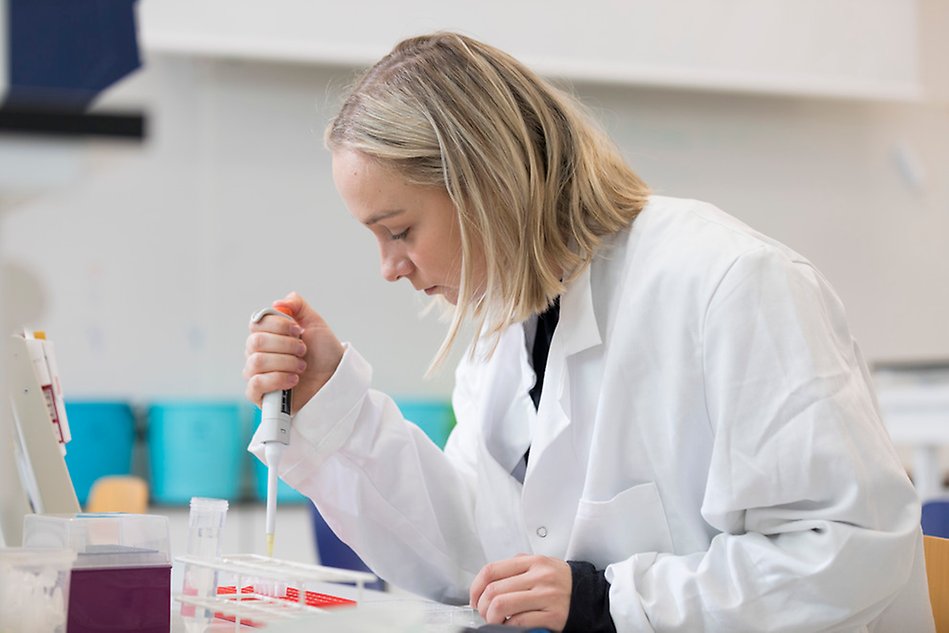Human Movement Lab
At the Human Movement Lab at Halmstad University, research and education in physical training, movement, function and health takes place.
Here you will find modern equipment for measuring and evaluating different types of movement and function, such as anatomical angles, range of motion and movement analyses in 2D and 3D, physiological functions such as heart, circulation and lung function, capillary blood analyses, strength, speed and power development, oxygen uptake capacity and body composition.
Facilities and equipment
The Human Movement Lab is part of the Rydberg Laboratory and is located in the S building along with most of the Rydberg Laboratory's other facilities. The Human Movement Lab consists of two parts, an exercise physiological part and a biomechanical part.
Examples of tests and equipment in the exercise physiology part are blood glucose and lactate measurement (both stationary and portable), equipment to measure physical abilities such as speed, explosiveness, strength, power development (Muscle Lab), balance, reaction speed, physical functions such as heart rate, muscle activity by electromyography (EMG, Delsys), lung capacity, resting metabolic rate and oxygen uptake by spirometry and indirect calorimetry (Oxycon, Jaeger), anthroprometric measures such as body composition by caliper and electrical impedance (InBody).
The exercise physiology lab includes Rodby treadmills and Monark ergometer bikes that can be linked to EMG, oxygen uptake and lactate threshold measurements, among others. In addition, there is equipment for various types of strength and power training and testing such as Eleiko power rack, smith machine, and the advanced training and testing machine Quantum (1080Motion) that can be used both isokinetically and isotonically.
In the biomechanical part, there is equipment for both simple motion analysis through high-speed cameras and various 2D motion analysis programs (e.g. Dartfish) and for advanced 3D motion analysis through a camera system and analysis programmes from Qualisys, which can detect movements down to the millimetre. This system is connected to two AMTI force plates and several external components can also be connected to measure, for example, muscle activity, heart rate, pressures against the body or forces.

Education
Halmstad University offers several programmes and courses at the School of Business, Innovation and Sustainability in the related fields of biomedicine, exercise physiology and biomechanics. Laboratory work is important in these courses and the different laboratories are located close to each other. In order to give students the best possible preparation for future working life, they are given the opportunity in their programmes to do practical laboratory work adapted to their studies in areas such as chemistry and biology as well as physics and mechanics. The Human Movement Lab provides practical laboratory training in subjects such as anatomy, exercise physiology, nutrition and biomechanics.
Research
Biomedical research at Halmstad University studies human movement and function in health and ill health. The focus is on skeletal, nerve and muscle function from a physiological and biomechanical perspective studied at the molecular, cellular and whole-body level. Researchers at the Rydberg Laboratory are involved in research projects that study physical activity and muscle function in patients with rheumatic diseases and pain, effects of exercise in various lifestyle diseases studied at the RNA, protein and whole muscle level and physiological and biomechanical aspects of exercise, performance, injury and rehabilitation among elite athletes.

